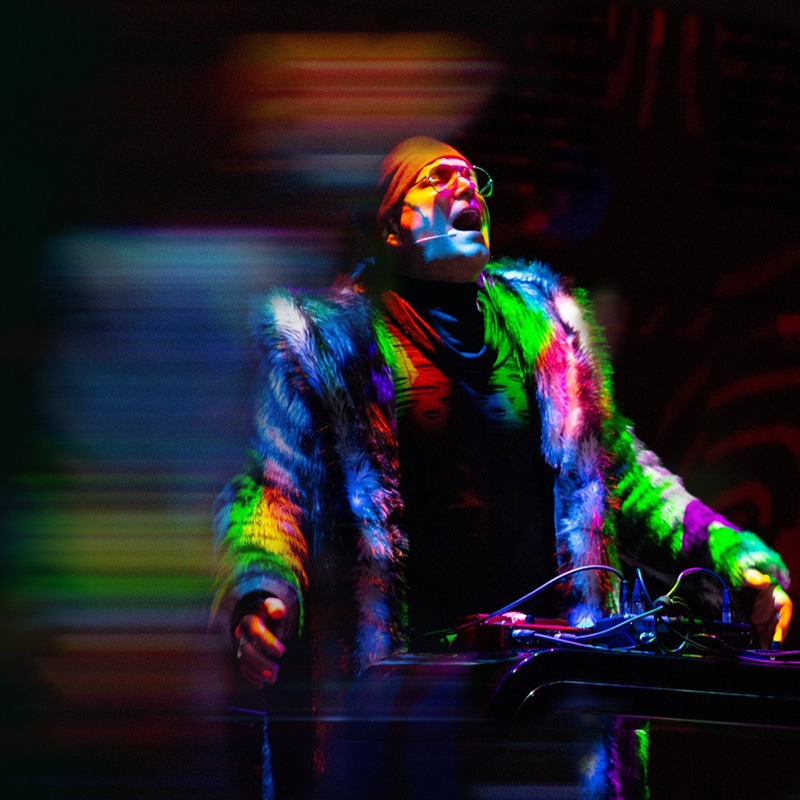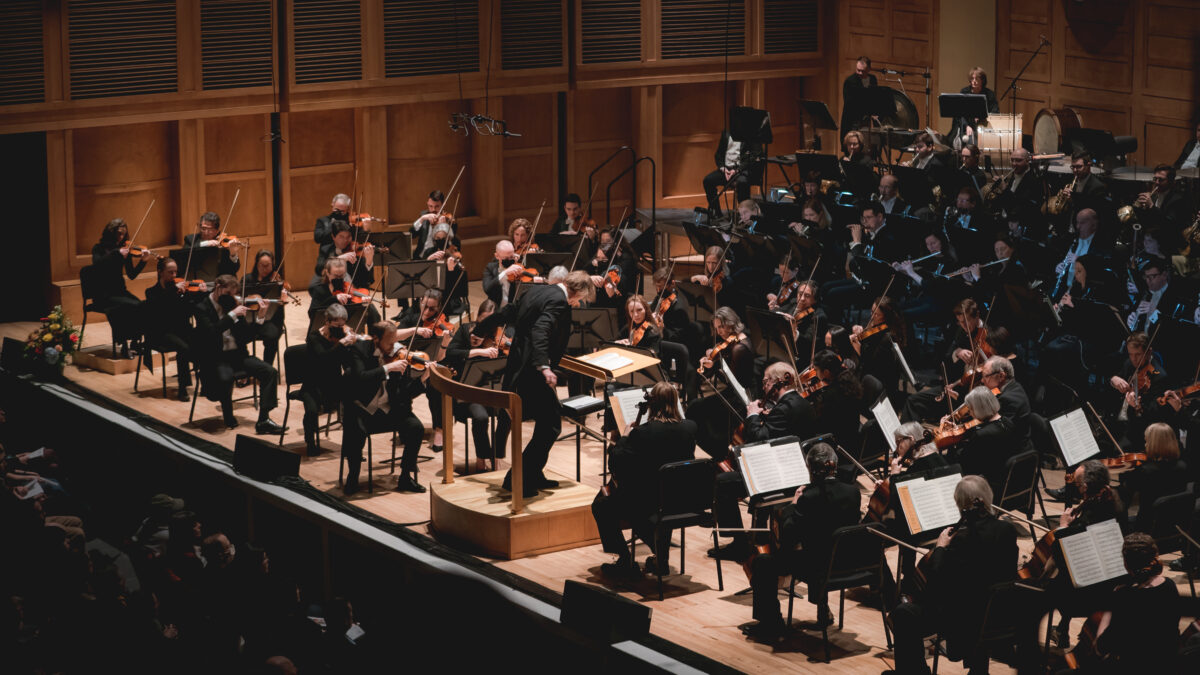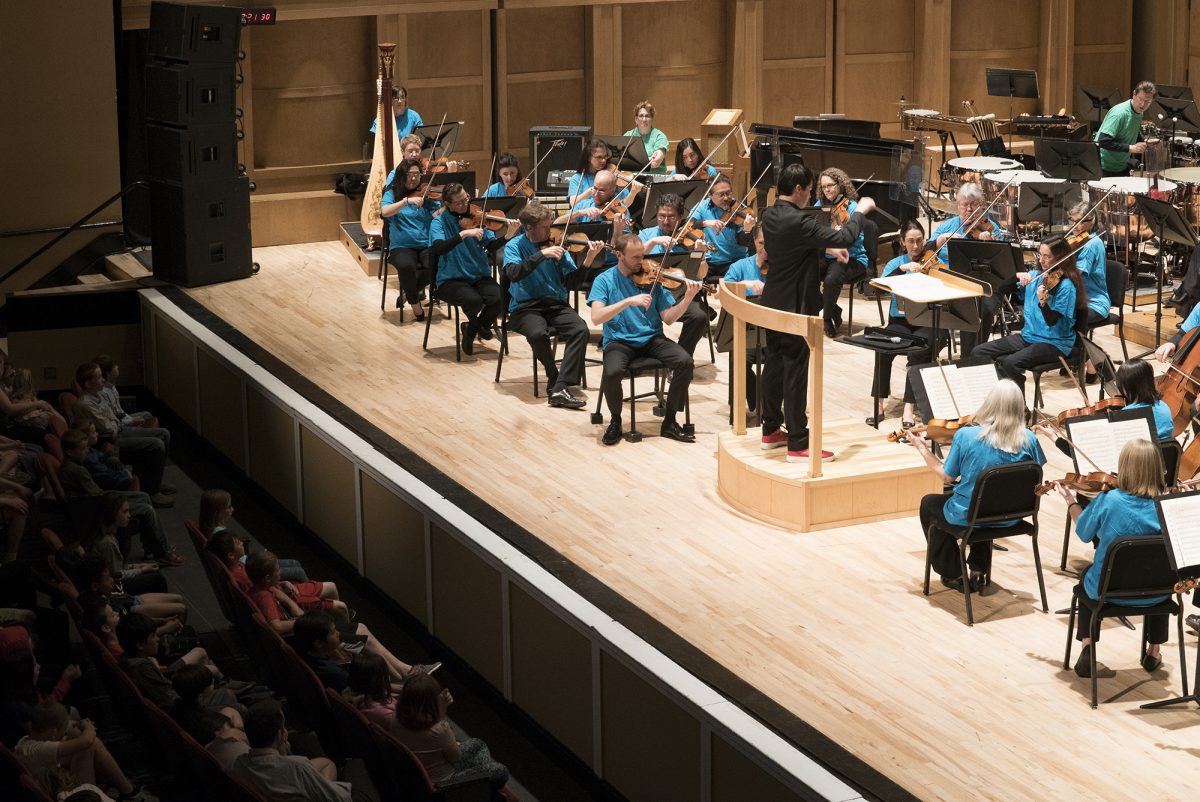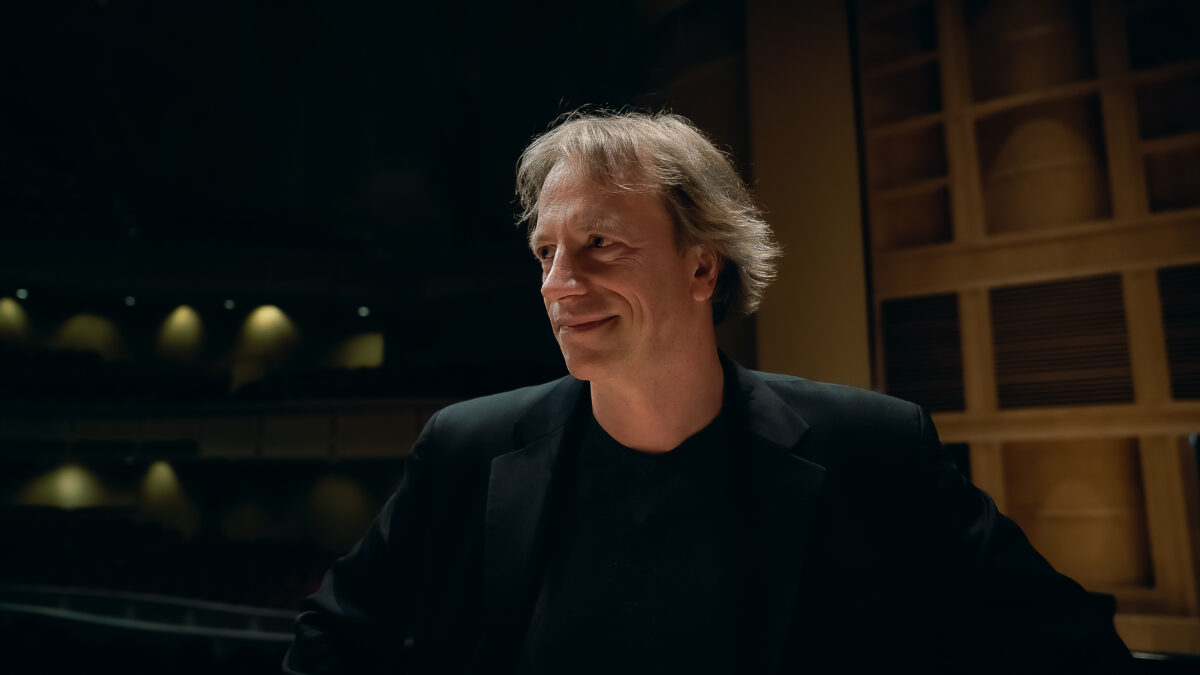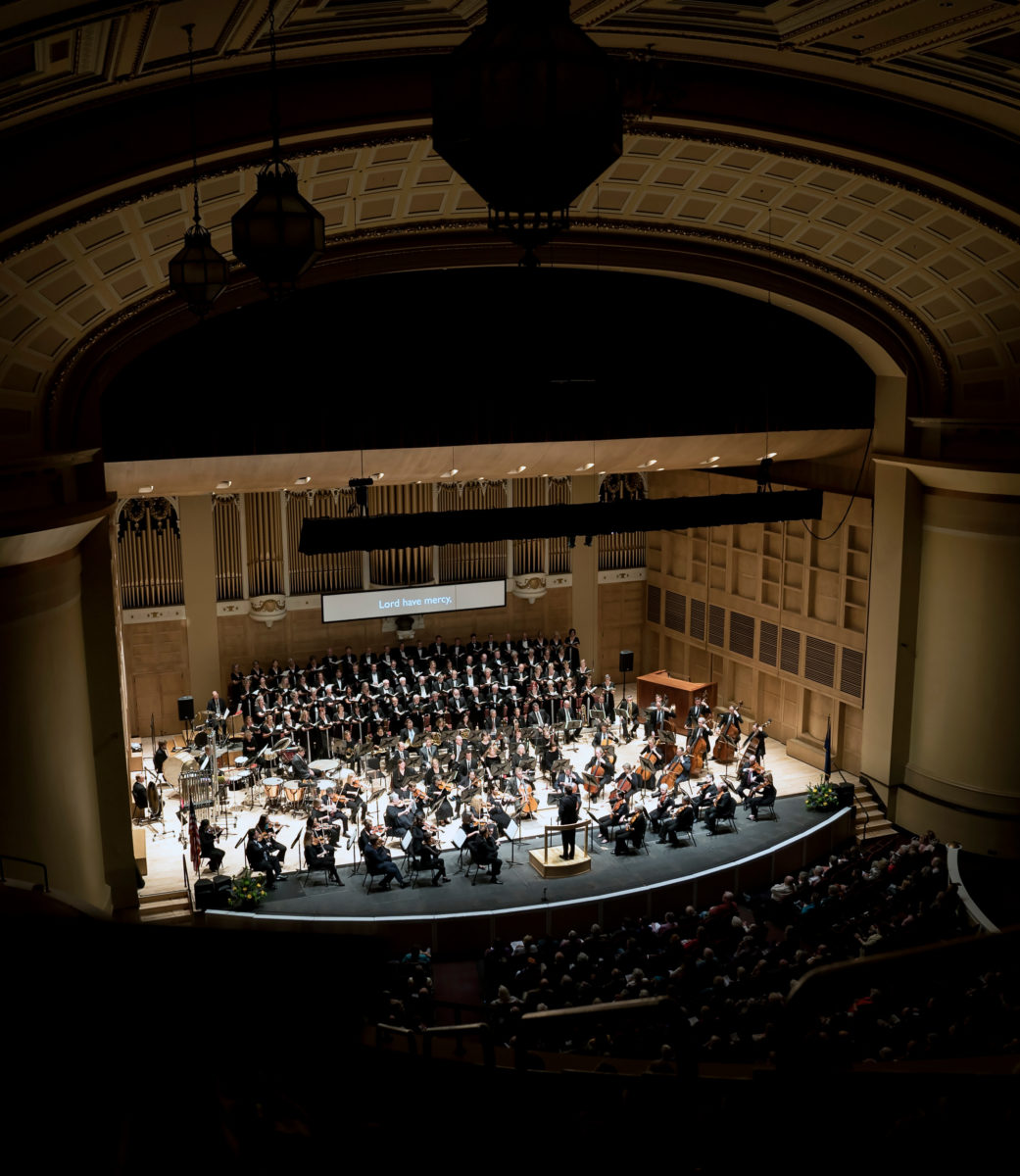Beethoven’s 5th Program Notes
Mykola Lysenko
Overture to Taras Bulba
Mykola Lysenko was born in 1842 in Hrynky, Poltava Governorate, now Ukraine, and died in 1912 in Kyiv, Russian Empire. Taras Bulba remained unperformed at the composer’s death and was first heard in 1924 in Kharkiv. The overture is scored for 3 flutes and piccolo, 3 oboes and English Horn, 3 clarinets and bass clarinet, 3 bassoons and contra bassoon, 4 horns, 3 trumpets, 3 trombones, tuba, timpani, percussion, harp and strings.
PSO audiences have their first-ever chance to hear a full work by Ukrainian composer Mykola Lysenko at these concerts. The overture to his opera Taras Bulba is a rousing curtain-raiser, alternating between the lyrical and the heroic. Drawing on melodies from the opera, it glows with Lysenko’s delight in the folk music of his country. The final broad, martial-sounding tune would rouse any army to solidarity and action.
Ukraine, so much in the news now, has a long, complicated history of occupation and struggle for freedom. It is a large country, second only to Russia in size among European countries, sharing borders with Poland, Russia, Hungary, Romania, Slovakia, Moldova and the Black Sea. For much of the Twentieth Century it was a Republic of the Soviet Union, at whose hands it suffered notable abuse, including a devastating famine generated by Soviet collectivization policies. During the Second World War, occupying Germany destroyed nearly the entire Jewish population of Ukraine. With the dissolution of the USSR in 1991, Ukraine gained the independence it currently battles to maintain.
Lysenko was born in the Ukrainian countryside to an aristocratic family. He studied first in his native country and then in Leipzig, Germany. His early interests in the natural sciences gradually receded in favor of music. After his time in Germany, he studied with Rimsky-Korsakov in St. Petersburg and then settled in Kyiv, where he lived the rest of his life.
Lysenko is often called the father of Ukrainian classical music. He combined his love of his country’s folk music with a steady desire to raise standards of taste and performance in the capital of Ukraine. As a composer, he wrote many art songs, a handful of operas, and music for choir, orchestra, piano and chamber ensembles. He toured for years as a pianist and conducted ensembles in Kyiv. His pedagogical work is his most enduring legacy: he founded the Ukrainian National School of Music, where he taught an entire generation of composers.
The opera Taras Bulba takes its story from the long story of the same name by Ukrainian/Russian author Nikolai Gogol (1809-1852). Taras Bulba is a Cossack and patriarch whose two sons return home from school in far off Kyiv. Bulba convinces them to join him in going to war against Poland. In the course of their adventures, one son dies for the love of a Polish woman, the other for patriotism, and in one version, Bulba himself is burned alive after a heroic last stand with a few comrades. The narrative paints with broad strokes, using stock images of Poles, Jews and Turks, among others, to bolster nationalistic fervor. The opera has been produced several times recently in Ukraine and other parts of Europe.
-Martin Webster
********
Valentin Silvestrov
The Messenger
Valentin Silvestrov was born in 1937, in Kyiv, Ukrainian Republic, and now lives in Berlin. The Messenger was written in 1996-1997 and is scored for a small orchestra of strings, with piano and recorded wind sounds.
If Mykola Lysenko, whose Taras Bulba overture opens this program, sought to place his skills and his life at the service of classical music that was recognizably Ukrainian, Valentyn Silvestrov-though also born in Ukraine-writes music that embraces many European traditions but seeks to blur them. It looks out at the history of music, seeing far into the distance, noting peaks and valleys but not dwelling long on any of them. He has written, “I do not write new music. My music is a response to and an echo of what already exists.”
The Messenger asks a lot of its listeners. It asks you to sit quietly for seven or eight minutes, hearing music that passes imperceptibly, borne on a soft breeze. (In fact, the sound of blowing wind is a constant presence in the work.) It asks you to let go of the idea that any small event has meaning or leads to something beyond itself. It may also ask you to focus deeply if an event catches your attention, using it to give shape to the whole piece. As the work is a memorial to the composer’s deceased wife Larissa, it may bring to mind your own lost loved ones. If you love the music of Mozart, you may hear echoes here, and you may be tempted to try to figure out whether Sylvestrov is actually quoting particular works. He is not, but you’ll be tempted to try to find which early keyboard sonata some of these passages quote.
Valentin Silvestrov was born in Kyiv in 1937. He began composing at a young age and later studied at the Kyiv Conservatory. His youthful music was complex, dissonant and thorny, and was eventually deemed unacceptable by the Soviet authorities. He was eventually expelled from the Composers’ Union of the USSR; the Soviet Union required music that it felt spoke directly to the masses. Silvestrov followed his muse without compromise, receiving international awards while remaining in Ukraine. The passing of his wife in 1996 pulled back the curtain on a space that led to tonight’s work and much other ineffable music. The most recent invasion of his country by Russia in 2022 led to a worldwide (re)discovery of his music, though the composer regrets that “this misfortune needed to happen for them to begin playing my music.” “Does music not have any value in and of itself without any kind of war?” he added.
Here in these eight minutes Silvestrov is remembering Mozart – and, a little bit, remembering Tchaikovsky remembering Mozart – which only leaves the question what Mozart is remembering.
– Martin Webster
********
Fazil Say
Never give up: Concerto for violoncello and orchestra
Fazil Say was born in 1970 in Ankara, Turkey and now lives in Istanbul. Never Give Up was written in 2017 for the program’s soloist, Camille Thomas. It is scored for 2 flutes, 2 oboes, 2 clarinets, 2 bassoons, 2 horns, 2 trumpets, percussion and strings.
Composer Fazil Say writes: “in 2015, 2016 and 2017 there were many terrorist attacks in Europe, particularly in Turkey and in my hometown of Istanbul … airports, concert halls, football stadiums and in the streets … it seems like it was almost every day, and it was a really dark time in our lives …” “When writing this concerto amid all this turbulence, I was determined to show resilience that we will never give up – and that there will always be hope for a beautiful and peaceful world.”
This piece, like others by this Turkish composer, has obviously strong personal and political meaning. Say calls it an “outcry for freedom and peace”. Listeners will easily discern the sounds of machine guns, marked Kalashnikov in the score of the second movement, which is subtitled “Terror Elegy”. In the same movement, the cello imitates the sound of the kaval, a Turkish ethnic double reed instrument. And throughout the piece, the soloist and orchestra evoke the sounds of the place where Europe and the Middle East meet.
Say was born in Ankara, Turkey in 1970 to a family of intellectuals and professionals. His musical talent and brilliant mind manifested early: he began piano lessons at age 3, by which time he was also fluent with arithmetic. He composed a piano sonata at age 14 and continues to be a fluent and prolific composer. He trained first in Ankara and then in Germany, studying with pianists David Levine and Menahem Pressler.
Say now enjoys an international career as both pianist and composer. His pianistic style embraces technical mastery and a sense of improvisational freedom, even in the most familiar of classical masterpieces. His compositions brim with melodic ideas that sound improvised but are actually contained within rigorously controlled structures. He is also an idealistic advocate of peace and cooperation in the world, whose wide-ranging views do not always align with mainstream ideology.
Never give up was written in 2017 for tonight’s soloist, the French cellist Camille Thomas, commissioned by the Bernard Magrez Cultural Institute. Its three movements are titled
- Never give up
- Terror elegy
- Song of hope
The work opens with an extended melody from the solo cello, marked “Expressive and Dramatic”, and later, “Fight against darkness”. When the orchestra enters, it provides a static background against which the solo voice expands its ideas. Later, over birdsong from the strings and percussion, solo cello and bassoon sing a long duet before the movement builds relentlessly to a rhythmic conclusion. The second movement’s evocations of Turkish folk instruments and machine guns nest in a texture of shifting colors that pushes the solo voice effortlessly into relief. Against the cello’s lament, the gunshot sounds are truly shocking. “Song of hope” is a folk dance in 7/8 meter, grouped 3+2+2. Violins and violas again evoke bird songs. The movement builds in excitement but then fades gradually to nothing but the sound of distant birdsong. As the cello prepares to leave the picture, music from the opening of the work reappears. Say is not merely spinning folkloric melodies, but rather using them in a well-controlled large structure. The conclusion is far from hopeless, if indefinite: The folly of man never ceases, but the greater world of nature spins on, implacable and forgiving.
– Martin Webster
********
Ludwig van Beethoven
Symphony No. 5 in C minor, op. 67
Ludwig van Beethoven was born in Bonn in 1770 and died in Vienna in 1827. Sketches for this work date from 1804, but Beethoven put it off for other projects (including the Fourth Symphony) until 1807, completing it in 1808. The Fifth Symphony premiered later that year at the Theater an der Wien, Vienna. The work calls for 2 flutes, piccolo, 2 oboes, 2 clarinets, 2 bassoons, contrabassoon, 2 horns, 2 trumpets, 3 trombones, timpani, and strings.
Three Gs and an E-flat—it’s the most famous theme in western music. And no wonder: it is the seed from which springs one of the most powerful works in all of the symphonic literature.
The four notes in question do not constitute a melody, really; instead they are a motive. Unlike Mozart or Schubert, Beethoven was not a natural melodist. His sketch books are filled with the agonizing evolution of simple melodic materials: a note changed here, a rhythm altered there. He wasn’t just looking for a good melody—he was looking for a musical theme that could shape an entire work. In the first movement of the Fifth Symphony, nearly every note that follows can be traced back to Beethoven’s simple four-note motive; this is what gives the music its inexorable inner logic and its extraordinary power.
The essence of the motive is rhythm: three short notes, one long. This rhythm is pervasive: you find it nearly everywhere you look. It not only constitutes the first theme of the sonata but the accompaniment to the lyrical second theme as well. The rhythm’s propulsive drive is so great that even its absence, as in the oboe cadenza, demands our attention.
There’s more to this motive than rhythm, of course: it has melodic and harmonic aspects as well. Beethoven exploits all of the motive’s implications with relentless concision; so much so that the ending seems to come too soon, and the tension it has created remains unresolved.
Resolution does not come from the second movement, a theme-and-variations. Yet its softness—and sheer beauty—are welcome after the wild and fanatically concentrated first. The three-short-one-long rhythm appears prominently, first in the winds, then in the brass. As the variations unwind it can be heard in other places, too.
The motive is heard buried within the mysterious opening to the Scherzo, then up-front and full force in the horns. Listen for it again in the little tag-end to the scrambling bass and cello theme of the trio. As Beethoven brings the motive through differing musical contexts, so he transforms its emotional effect: what had been the building block for the doom-laden opening bars now serves the same function for the mighty resolve of the Scherzo’s horn melody.
Instead of a full break, the Scherzo ends with an eerie transition to the Finale, full of musical and emotional ambiguity. The motive lurks around this transition, but when the Finale’s celebratory fanfare begins, it is at first entirely absent. Eventually you can hear it sneaking back in, and before long the floodgates are opened and it is nearly everywhere, transformed indelibly into triumph.
Beethoven’s friend Schindler said that the composer described his motive with the words, “Thus Fate knocks at the door.” So dramatic, and so apt! Unfortunately, it turns out that this was likely a fabrication on Schindler’s part. But the motive and the music it engendered haven’t changed, only the meaning we impose upon it. The emotional meaning of the motive as it evolves throughout the piece is so clearly delineated that its impact is profound no matter what qualities we ascribe to it.
Furthermore, the unstoppable power of this symphony is not related to the many imaginative interpretations spawned by that spurious quote. It stems directly from the composer’s manipulation of purely musical materials in such a way that some meaning, some truth is imparted to every listener. If that meaning contains a story or a theme, well and good. But the drama, and the emotional connection we make to it, have come from the music and not vice-versa. With music as astonishing as this, words seem superfluous anyway.
– Mark Rohr





